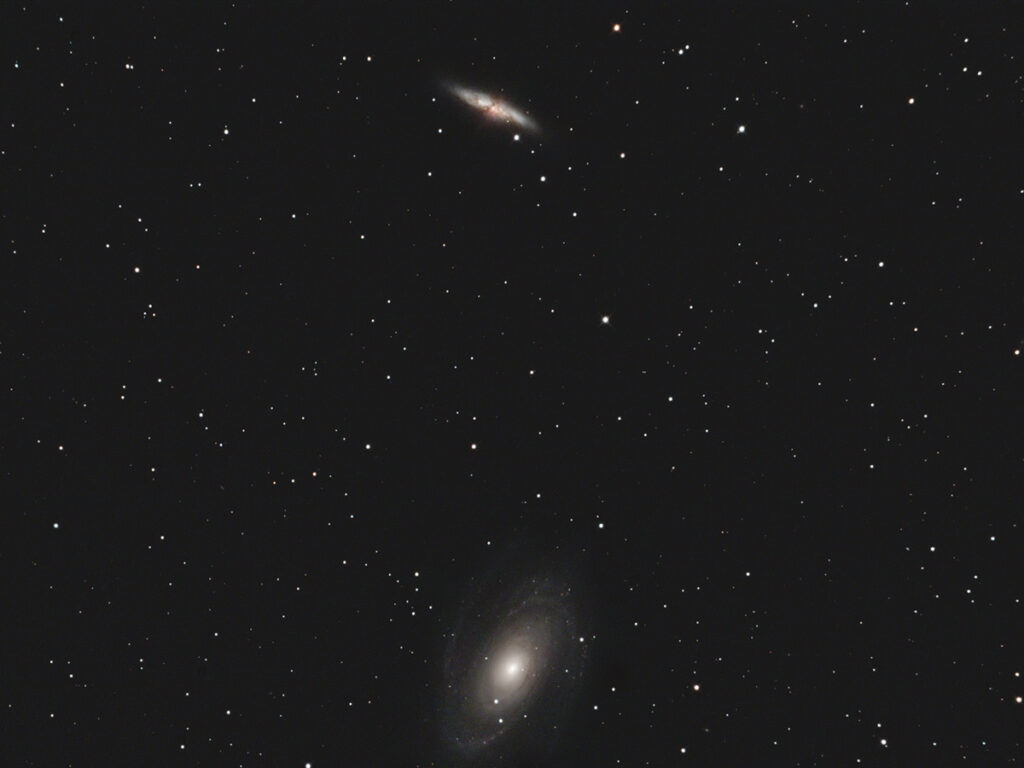
Telescope: Astro-Tech 8” f/8 Ritchey-Chretien, Orion Atlas EQ-G
Camera: Canon EOS Ra, Baader Mk III MPCC
Filter: Orion Imaging Skyglow Filter
Guide scope: Astro-Tech 60mm, Starlight Xpress Super Star, PHD2
Exposure: 17x120sec, ISO 800, saved as RAW
Darks: Internal (Long Exposure Noise Reduction On)
Flats: 32×1/2sec, Tee shirt flats taken at dusk
Average Light Pollution: Red zone, Bortle 8, fair transparency, moonlight
Lensed Sky Quality Meter: 18.4
Stacking: Mean with a 1-sigma clip.
White Balance: Nebulosity Automatic
Software: Backyard EOS, Deep Sky Stacker, Nebulosity, Photoshop
M77 is the closest and brightest example of a Seyfert Galaxy. These galaxies are characterized by a bright stellar core and very strong radio emissions. It is now known that these arise from a super massive black hole at the galaxy’s core. At the core of M77 lies a black hole with an estimated mass of 11 million suns. As a radio source M77 is known as Cetus A. M77 lies about 1 degree east of the 4th magnitude star delta Cetus making it fairly easy to locate. Through a telescope the bright core of M77 is easy to spot, but the spiral arms are quite faint.
M77 is currently located in the southern sky during the early evening.









Recent Comments